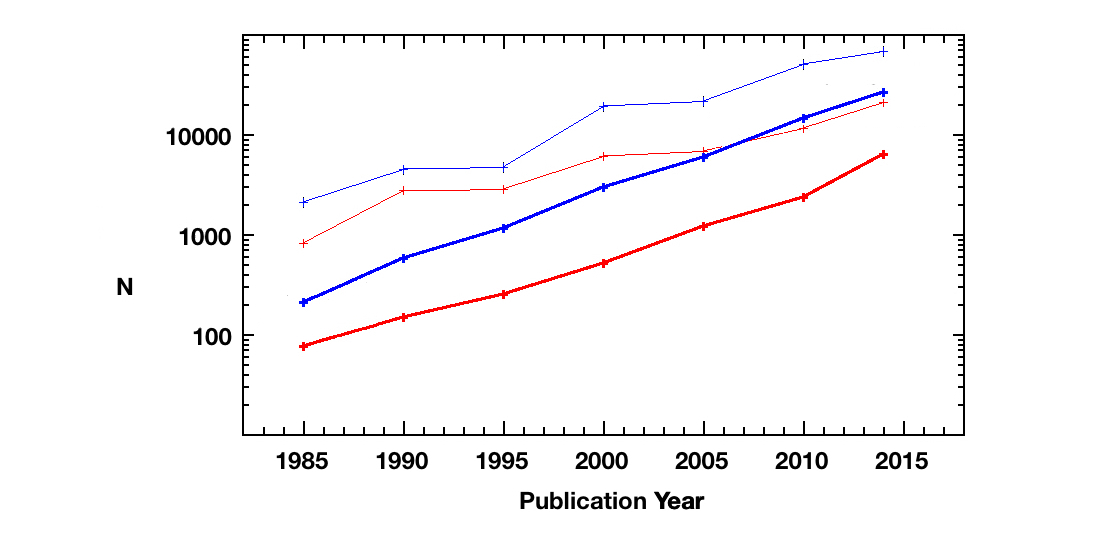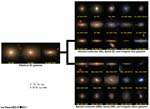NED-D: A Master List of Redshift-Independent Extragalactic Distances
(Version 17.1.0 May 2020)
As compiled by Ian Steer, Barry F. Madore, and the NED Team
NASA/IPAC Extragalactic Database (NED)
California Institute of Technology
The Observatories
Carnegie Institution of Washington
Pasadena CA
With additional generous support from the Carnegie Institution of Canada
NED-D data files:
Overview
NED-D is an online compilation of redshift-independent extragalactic distances found in an extensive search of the recently published literature. Version 17.1.0 (May 2020) of NED-D provides 67624 distances to 7229 galaxies based on primary methods, using standard candles such as Cepheids and Type Ia supernova, or standard rulers such as globular cluster radii and masers. Also provided are 204941 distances for 141349 galaxies based on secondary methods (the Tully-Fisher or Fundamental Plane relations, etc.). In total, NED-D V17.1.0 provides 272573 redshift-independent extragalactic distances for 147363 galaxies.
Users can access the results of this compilation of distances in two independent ways:
- On the Main Interface to NED the link labeled Redshift Independent Distances allows one to retrieve distances for individual galaxies within NED. For the Andromeda galaxy for example, this request currently returns 407 distances based on 23 redshift-independent methods. Galaxy queries draw from the 233718 distances for 145283 galaxies and systems of galaxies that come from sources that are both peer-reviewed and incorporated within the main NED database.
- The Galaxy Distances Tabulation (NED-D) [Download] contains all 272573 distances for all 147363 galaxies available, including all distances incorporated within NED as above, as well as distances from some peer-reviewed papers still to be added to NED, plus distances found in conference proceedings or preprints not generally found in the main NED database. The format is CSV (comma-separated variable), appropriate for loading into most database management systems. Table 1 describes the structure of this tabular version of NED-D.
The methodology, content, and use of NED-D are described in an article for The Astronomical Journal by the NED Team (Steer et al. 2017). Our primary gateways to the redshift-independent distance estimates published in the astronomical literature are the NASA/SAO Astrophysics Data System (ADS), described by Kurtz et al. (2000), and the arXiv astronomical paper archive, described by Ginsparg (2011). Distances based on several dozen different redshift-independent distance indicators, including primary and secondary indicators, are available. Table 2 provides a complete listing. If your research benefits from use of the redshift-independent distance estimates compiled in NED, a citation to Steer et al. 2017 would be gratefully appreciated, in addition to the recommended acknowledgement of NED.
NED-D is designed to meet the need for an up-to-date and easy-to-use tabulation of redshift-independent extragalactic distances published in the precision era, broadly taken to be since 1990 and launch of the NASA Hubble Space Telescope (HST). NED-D exists to support scientists, space missions, and ground-based observatories in planning, interpretation, and publication of research on galaxies, extragalactic distances, and cosmology. NED-D is being maintained as part of NED core activities, with updated and upgraded versions being made available on a regular basis.
Table 1: Structure of the tabular version of NED-D Field Label Description 1 Exclusion Code Exclusion Code: indicates where "" (blank) which of the distances from the master file are from peer-reviewed sources incorporated within NED, and are both interactive within NED and available via the Redshift Independent Distances query, and indicates by the letter "R" and "N" which are among the distances not yet included in NED but available in the NED-D tabulation. 2 D Record index. 3 G Object index. 4 Galaxy ID NED "Preferred Object Name" for the host galaxy. 5 m-M Distance Modulus expressed in mag. 6 err Quoted (one-sigma) statistical (random) error on the distance modulus. 7 D (Mpc) Metric distance (in units of Mpc). 8 Method Distance indicator (method) used; see Table 2 for explanations of the codes. 9 REFCODE REFCODE for the originating paper publishing the distance. Ancillary information of the various methods, such as added corrections, zero points, etc. 10 SN ID Supernova Name: informs users only when distances are based on Type Ia Supernova (SNIa), Type II Supernova optical (SNII optical), or Type II Supernova radio (SNII radio) methods, stating which SN is referenced, easing interactive comparison between NED-D and the author(s) data, which are most often presented in SN order whether by date or name, rather than order of galaxy host position, as given here. 11 redshift (z) Redshift: appears only in cases where the distance modulus is published as a "luminosity distance modulus", as provided mostly for Type Ia supernova (SNIa), showing the target redshift used to transform each "luminosity distance modulus" given to the corresponding "metric distance", via m-M(L) = [5 logD/(1+z)]/5. 12 Hubble const. Hubble constant: appears only in cases where the Hubble constant assumed by the author(s) differs from the default value of H = 70 km/s/Mpc used here and by the Supernova Cosmology Project, the Supernova Legacy Survey and others, see for example Astier et al. (2006), who round down the value of H = 72 km/s/Mpc from the NASA HST Key Project final results by Freedman et al. (2001). 13 Adopted LMC modulus LMC zero point: appears only in cases where the zero point assumed by the author(s) differs from a fiduciary value of 18.50 mag. 14 Date (Yr. - 1980) Reference Date 15 Notes Notes distinguishing where necessary relevant measurement data.
Figure 1. Growth in the number of individual redshift-independent distance estimates (blue), and the galaxies with such estimates (red), is shown for both primary indicators (thick lines) and secondary indicators (thin lines). Cumulative totals are shown for the end of each five-year period, except the most recent period which is current through 2014.
NED-D Historical Distances (pre-1930)
We have also collected, using similar procedures, 290 distances to galaxies published before 1930. One of us (I.S.) has provided a brief introduction to these.
Hubble Tuning Fork Shown to Scale Using Distances from NED-D
Click on the image below for details.
References
- Astier, P. et al. 2006, Astron. & Astrophys., 447, 31 ( 2006A&A...447...31A)
- Freedman, W. L. et al. 2001, Astrophys. J., 553, 47 ( 2001ApJ...553...47F)
- Ginsparg, P. 2011, Nature, 476, 145 ( 2011Natur.476..145G)
- Kurtz, M. J. et al. 2000, Astron. & Astrophys. Suppl. 143, 41 ( 2000A&AS..143...41K)
- Steer, I. et al. 2017, Astron. J. 153, 37 ( 2017AJ....153...37S)

